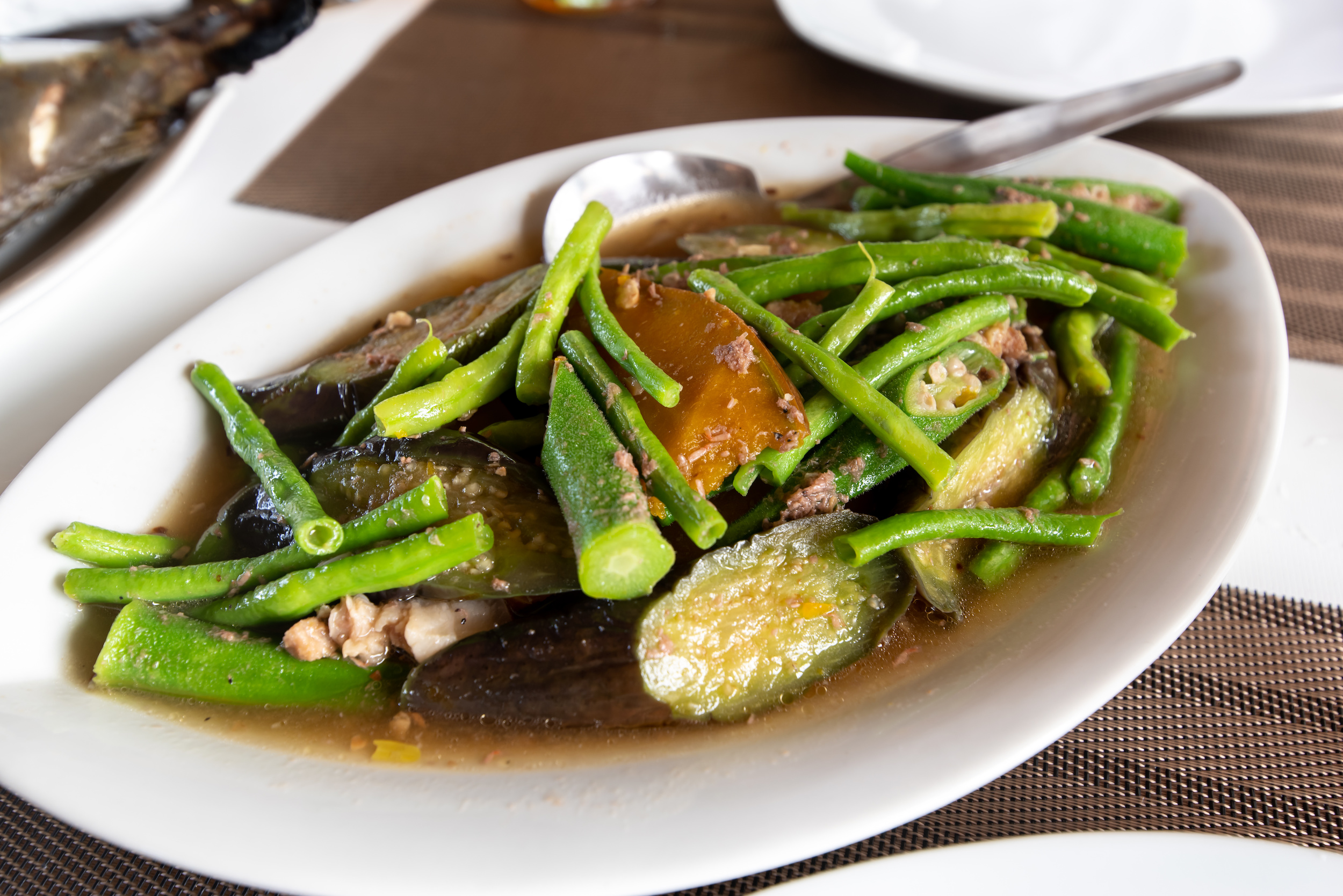Why pinakbet should be a staple in every meal plan

Pinakbet, a dish originating from the northern regions of the country, is packed with nutritious ingredients. While there are many variations of the dish – from cooking it with fish sauce or shrimp paste to using tomato sauce – it is the number of vegetables used in it is the secret of its goodness.
At least seven types of vegetables can be found in every serving of pinakbet. These are usually ampalaya (bitter melon), talong (eggplant), okra, green beans, chili peppers, tomatoes, sweet potato, and squash – all of which are good sources of different vitamins and minerals.
Ampalaya contains many antioxidants and studies found that it has medicinal properties that help reduce blood sugar. Eggplant supports the reduction of causes of heart disease. Green beans help to keep the digestive system healthy and running smoothly. Squash is high in beta-carotene, which the body turns into vitamin A that can strengthen the immune system and promote healthy eyesight. Thes are just some of the benefits from its various ingredients.
Eating pinakbet on a regular basis would mean that Filipino families can take advantage of all the nutritional benefits from its vegetables.
One important point is that the key ingredients in pinakbet are all easily accessible. Another plus is that cooking pinakbet is easy — once all the chopping and preparation of the vegetables is done, it takes just 10 to 15 minutes to cook.
First, sauté onion, garlic, and ginger in a pot with hot cooking oil. Then add pork or shrimp for flavor depending on preference. Add a touch of fish sauce or shrimp paste and continue to stir, then add some water, and add in the vegetables. Cook until all ingredients are tender but make sure to not overcook the vegetables to retain their nutrients.
There are other ways of cooking pinakbet — or pakbet as some call it. As the late food writer Doreen G. Fernandez wrote in her book Tikim: Essays on Philippine Food and Culture, “Even pinakbet, the traditional Ilokano vegetables stew with bagoong, has known changes in its time. The original has tiny native ampalaya, talong and okra tossed in a pot with fish bagoong [fermented fish paste] and tomatoes. No oil, no frying. The Tagalogs have sauteed it in oil. Some Ilokanos add bagnet (the Ilokano lechon kawali [skillet or oven-roasted pork]) to it. Others add chicharron. Gene Gonzales cooks it in olive oil.” But the essence is the vegetables and the simplicity of the dish.
With vegetables as main ingredients, pinakbet is a dish that supports Filipino farmers. When consumers purchase vegetables, they are not only providing their households with a healthy meal but are also helping and supporting the livelihood of Filipino farmers working hard to produce good quality vegetable crops. this is why global vegetable seed company East-West Seed Philippines (EWS) is promoting pinakbet as a dish that should be a staple in the meal plan of every Filipino family.
Backed by research and innovation experiences for close to four decades, EWS has been developing improved vegetable seed varieties that help farmers improve their yields, reduce pesticide and water usage, and earn more from their work. The vegetable seeds they offer were developed and bred here in the Philippines to ensure that they will thrive in local growing conditions. Their seeds can also be grown in anyone’s backyard or home garden.
To learn more about the programs and initiatives of EWS visit https://ph.eastwestseed.com and the Oh My Gulay! Campaign of the East-West Seed Foundation at https://www.facebook.com/OhMyGulay.OMG.



